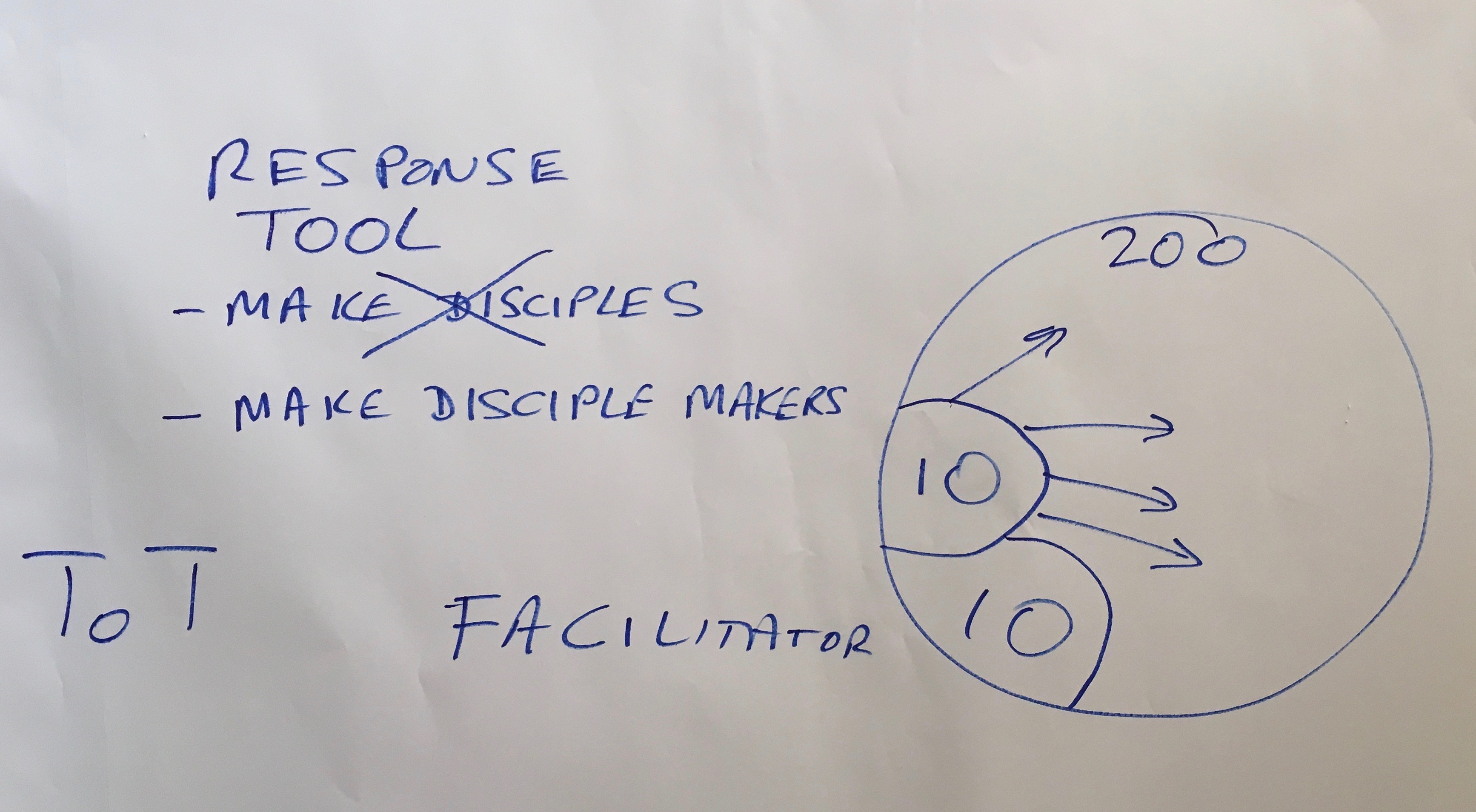A discussion with our partner in Ethiopia raised the issue that the ARA way of training seems to be be inefficient. For twenty years they have trained through a structure of Trainers of Trainers (ToTs) who work with local Facilitators who in turn teach in the local church. The partner staff team show the ToTs how to teach the material, and ToTs show local facilitators how to teach the material in the local church. When the facilitators teach in the church they can have 50-100 church members in a training session. In this way they only have one teaching per church and then they can move on to another church thus covering an entire region in a year.
Dissatisfaction with the impact from this mode of teaching led our partner to ARA. As they have implemented ARA the structure of ToTs and Facilitators was maintained. Because ARA demands that church learning community sizes be kept to around 10 people this means that to reach a church of 200 people the course would need to be run 20 times. This issue enabled the discussion to focus on a key concept of ARA. This is the idea of agents of transformation being the focus of learning. So, for example, a course on discipleship would typically be aimed at making disciples. But according to ARA a discipleship course would aim at making disciple-makers. Potential disciple-makers would be identified during the situational analysis and the training would focus on building them as disciples and disciple-makers. In our partner’s example, it would be the responsibility of those trained as disciple-makers to train the rest of the church. The partner training team of ToTs and facilitators would implement the course with one or two learning communities. If the course outcomes have been achieved then the disciple-makers would continue the process of training in their local church so that the entire church is impacted.
This example demonstrates that a critical task of situation analysis is to identify as learners the ones who have the potential to become agents of transformation in their community. It is these potential agents of transformation who are to be profiled.
This was an “Aha” moment in the discussion and satisfactorily addressed the concern of how to reach an entire church in an efficient way.



Comments
Send a Reply